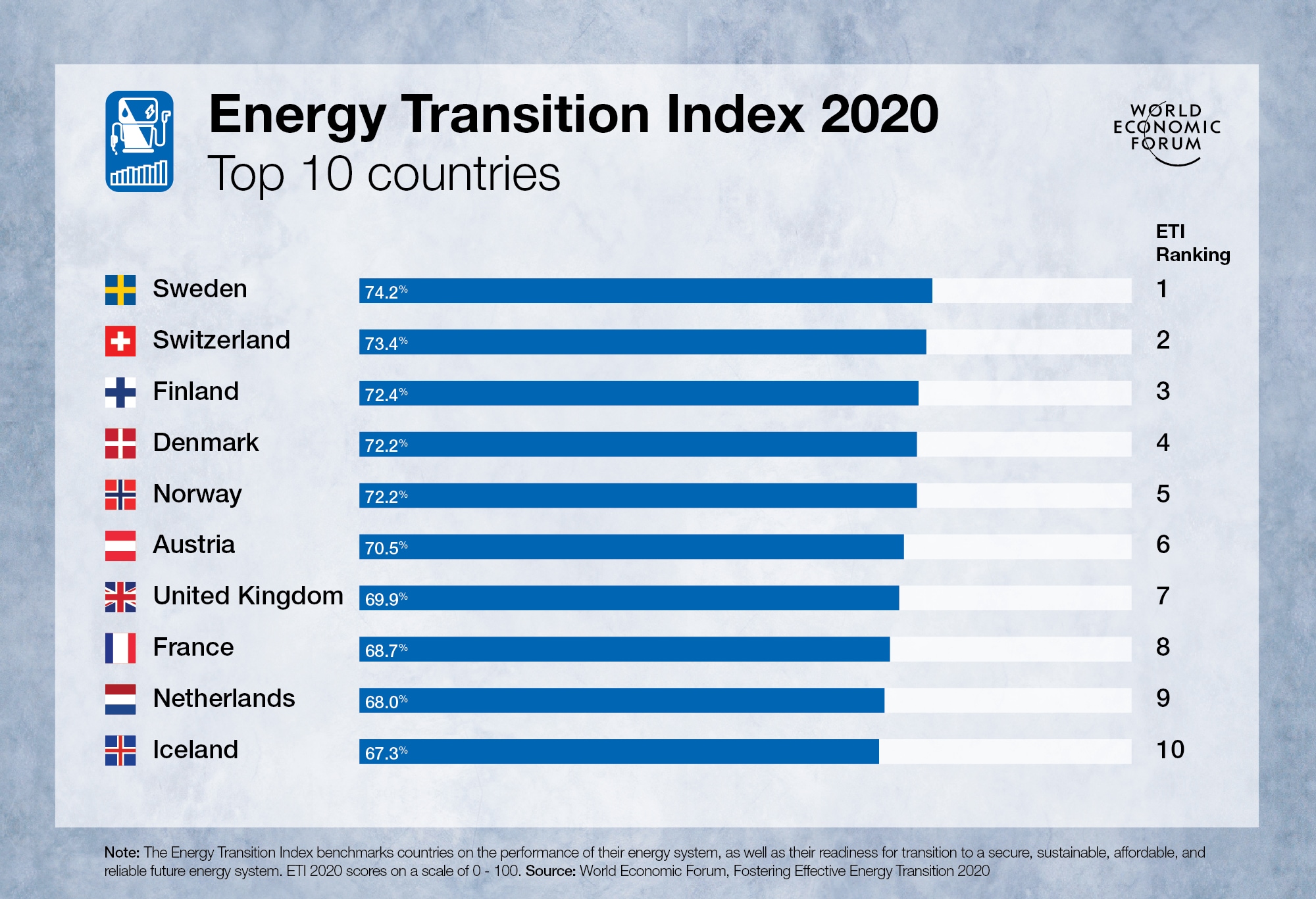Going green could save Europe €1 trillion in fossil fuel costs

A bright future for clean energy in Europe?
Image: Unsplash/Karsten Würth
Stay up to date:
Future of the Environment
Listen to the article
- Modelling by think-tank Ember suggests the potential for decarbonizing Europe's power system.
- It could be 95% by the middle of the next decade - at no extra cost - researchers found.
- The fossil fuel savings could total €1 trillion by 2035.
By upgrading its power system and quadrupling growth in wind and solar capacity, Europe could save an estimated €1 trillion by 2035.
That's the finding of a new report from energy think-tank Ember. And, even better? Researchers believe a 95% clean power system in Europe can be achieved by 2035 - all without threatening supply or adding additional cost to existing plans for a smaller and more polluting electricity supply.
"Scaling clean power is a win-win-win," explains Chris Rosslowe, Ember's senior energy analyst. "It will save money, put Europe on track for its climate commitments and reduce its reliance on imported fossil fuels. Europe should invest now for a huge payback by 2035."
What's the World Economic Forum doing about the transition to clean energy?
The move to green energy in Europe
The 'New Generation' study modelled the European electricity system to find the cheapest pathways to 2050 to limit global warming to 1.5°C.
It found that all three pathways lead to a clean power system by 2035 (95% low-emission, 70%-80% wind and solar). And, while initial investment could be as high as €750 billion, savings on fossil fuels could reach €1 trillion in total between now and 2035 - a figure that could be an underestimate if high fossil fuel prices persist.
Such a move would also bring benefits to the climate, human health and energy security, argue the report's authors.
Bye-bye coal and gas, hello wind and solar
The report's models see coal phased out entirely by 2030 and unabated gas cut to less than 5% of generation by the middle of the next decade.
To replace it?
Solar capacity needs to expand by up to nine times and wind capacity needs to quadruple. Emerging energy technologies will help manage supply and demand issues when solar and wind outputs are low, the authors say.
Such emerging technology is the focus of the World Economic Forum's First Movers Coalition, which saw its membership expand at Davos 2022. The coalition aims to use the purchasing power of the world's largest companies to drive the development and evolution of zero-carbon technologies in the world's hardest-to-abate sectors.
Accept our marketing cookies to access this content.
These cookies are currently disabled in your browser.
Don't miss any update on this topic
Create a free account and access your personalized content collection with our latest publications and analyses.
License and Republishing
World Economic Forum articles may be republished in accordance with the Creative Commons Attribution-NonCommercial-NoDerivatives 4.0 International Public License, and in accordance with our Terms of Use.
The views expressed in this article are those of the author alone and not the World Economic Forum.
Related topics:
Forum Stories newsletter
Bringing you weekly curated insights and analysis on the global issues that matter.
More on Nature and BiodiversitySee all
Sarah Franklin and Lindsey Prowse
April 22, 2025
Jeff Merritt
April 22, 2025
Elizabeth Mills
April 17, 2025
Tom Crowfoot
April 17, 2025







